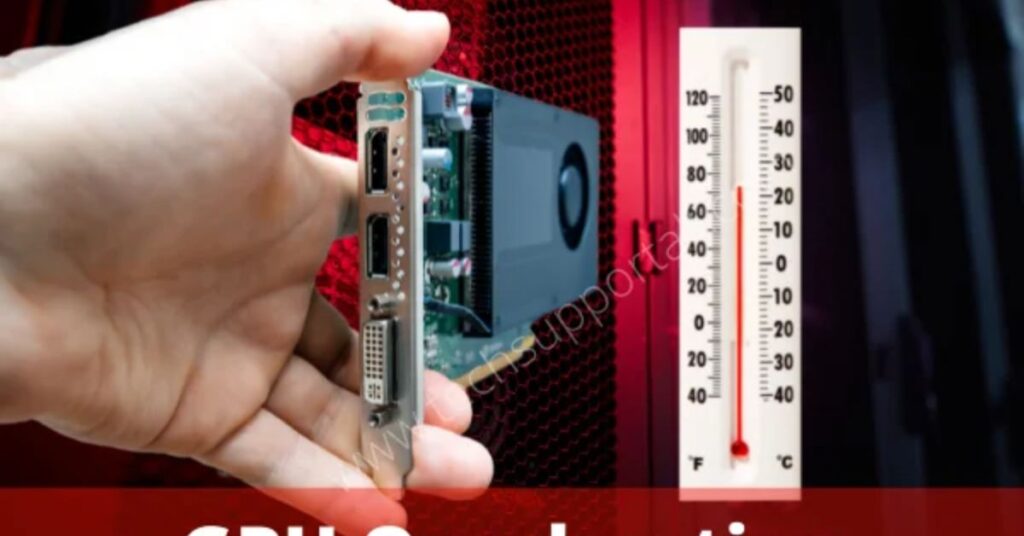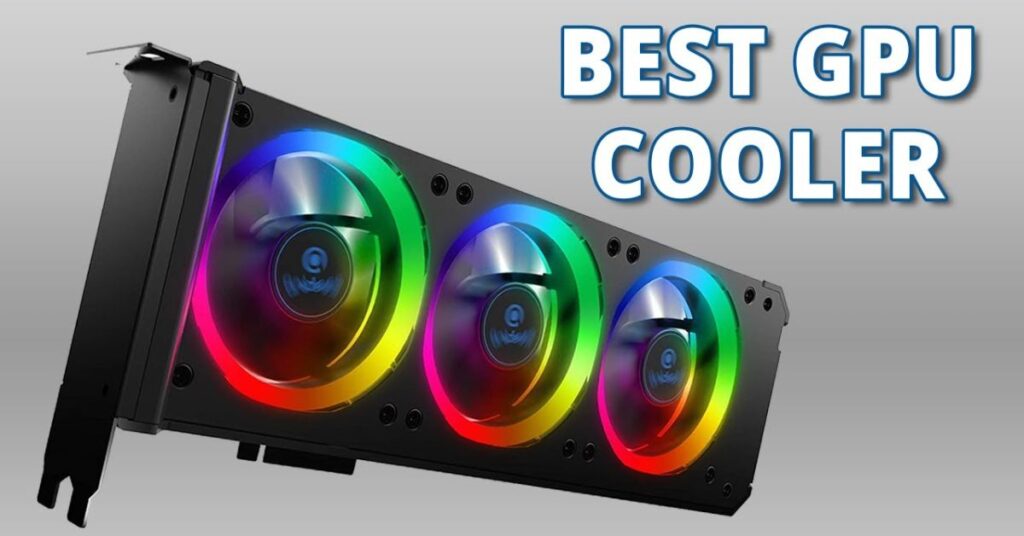If your GPU goes over 85°C (185°F), it’s too hot. Most modern GPUs work best under 75°C. High heat can slow performance or damage parts. Keep it cool with good airflow, clean fans, and fresh thermal paste.
In this guide, we’ll explain what a GPU temp is too high, what’s safe, and how to keep it cool.
Introduction
Ever feel your PC getting too hot while gaming? That’s your GPU working hard. But how hot is safe? Is 80°C okay? What about 90°C? Let’s make GPU heat simple, so you don’t damage your graphics card..
Why GPU Temperature Matters
Your GPU is the muscle behind every game, 3D render, or video playback. And like any hardworking engine, it heats up. Keeping it cool ensures longevity, and smooth performance, and protects your expensive hardware investment.
Common Misconceptions About GPU Temps
Many think if their GPU isn’t frying eggs, it’s fine. Or worse, they believe high temps = high performance. Spoiler alert: not always true.
Understanding GPU Temperature Ranges
Ideal GPU Temperature While Idle
At idle, your GPU should chill around 30°C to 45°C. If it’s hitting 60°C while doing nothing, that’s a red flag.
Normal Temperature During Gaming or Heavy Load
Under stress—think AAA gaming or 3D rendering—65°C to 85°C is generally safe. Many cards can touch 88°C and still be within spec.
Maximum Safe Temperature Limit
Most modern GPUs from NVIDIA or AMD can handle up to 95°C, but operating at this level constantly is risky. Ideally, try to stay under 85°C for long-term health.
What Happens If a GPU Overheats?

Thermal Throttling Explained
Your GPU has a self-preservation instinct. When it gets too hot, it slows down—reducing clock speeds to cool off. This is called thermal throttling and it murders your FPS.
Risk of Hardware Damage
Extended exposure to heat wears out the thermal paste, fans, and even circuits. Translation? A slow death for your GPU.
Impact on Performance and Lifespan
Overheating shortens lifespan, increases crashes, and often leads to early retirement (for your GPU—not you).
How to Check Your GPU Temperature
Built-In Tools (NVIDIA/AMD Software)
Use NVIDIA GeForce Experience or AMD Radeon Software—both offer real-time temperature monitoring and performance tuning.
Third-Party Software
Apps like MSI Afterburner, HWMonitor, and GPU-Z give detailed temp readings, fan speeds, and clock data.
Safe GPU Temps by Manufacturer
NVIDIA Safe Temperature Range
NVIDIA GPUs are safe up to 93°C, but optimal performance is around 65°C to 80°C.
AMD Safe Temperature Range
AMD cards can also handle up to 95°C, especially the RX series. Still, aim for 60°C to 85°C during load.
Factors That Influence GPU Temperature
Ambient Room Temperature
If your room feels like a sauna, expect your GPU to follow suit. Cooler room = cooler GPU.
Airflow and Case Design
Poor airflow turns your PC into an oven. Good airflow keeps things breezy inside.
GPU Workload and Overclocking
Pushing your GPU to the edge? Overclocking boosts power—and heat. Monitor it closely.
Cooling Solutions for Hot GPUs
Stock Cooling vs Aftermarket Coolers
Stock fans do the job, but aftermarket coolers like Noctua or Arctic offer quieter and cooler performance.
Liquid Cooling Options
Liquid cooling is next-level. It’s pricier but drastically lowers GPU temps, especially for overclockers.
External Cooling Methods
Open-air cases or additional external fans help in tough environments—especially in summer.
Best Practices to Keep GPU Cool

Improve Case Ventilation
Add intake and exhaust fans. Maintain positive air pressure for clean, cool airflow.
Clean Your PC Regularly
Dust = heat trap. Clean fans, filters, and heatsinks monthly.
Optimize Fan Curves
Custom fan curves in MSI Afterburner can spin fans faster as temps rise—preventing thermal spikes.
Undervolting for Temperature Control
Lower voltage = less heat. Use tools like AMD’s WattMan or Afterburner to undervolt safely.
Signs Your GPU Is Too Hot
Game Crashes and Stuttering
Sudden crashes mid-game? Could be your GPU waving the white flag due to heat.
Unexpected Shutdowns
If your PC shuts down or restarts randomly, check your GPU temps ASAP.
Loud Fans and High RPMs
If your fans sound like a jet engine, your GPU is working overtime to cool off.
Debunking GPU Temperature Myths
“Higher Temp Means Better Performance”
Nope. Higher temps usually mean throttling, lag, and shorter lifespan—not performance.
“All GPUs Run Hot, It’s Normal”
Some heat is fine. But 90°C+ constantly? That’s not “normal,” that’s a problem waiting to happen.
When to Worry: Red Flags of Overheating
Constant 90°C+ Readings
If you’re always in the red zone, it’s time to troubleshoot.
Persistent Fan Noise and Heat Output
Loud fans and hot air mean your cooling system is maxed out. Time for an upgrade or cleanup.
Real-World GPU Temp Examples
Gaming Benchmarks and Average Temps
- RTX 3060 Ti: 70°C under load
- RX 6700 XT: 75–80°C during gaming
- RTX 4090: 80–85°C with ray tracing enabled
Crypto Mining and Professional Loads
Mining pushes GPUs 24/7. Temps stay high—often around 85°C—which is dangerous long-term.
FAQ’s
- Do all GPUs Have the Same Safe Temperature?
Not every GPU runs at the same temperature. NVIDIA and AMD have different safe limits. Always check the specs for your specific model.
- What’s the First Sign My GPU Is Overheating?
Loud fans, stuttering, or crashes are early warnings. These signs mean your GPU is struggling with heat and may soon throttle or shut down.
- Is 80°C Okay for a GPU?
Yes, most GPUs can handle 80°C under load. But try to stay below it for better long-term performance and safety.
- Is 90°C Safe for Long Gaming Sessions?
No, running above 90°C too often can shorten your GPU’s life and cause performance drops.
- Can Cleaning My PC Lower GPU Temps?
Yes, removing dust improves airflow and helps your GPU stay cool without upgrading any hardware.
Conclusion
Knowing what temperature is too hot for your GPU can save you from big problems later. Staying under 85°C helps protect performance and lifespan. Use proper cooling, clean your PC, and monitor temps regularly. With the right care, your GPU stays fast, cool, and safe—whether you’re gaming, editing, or mining.
Is 80c Safe For GPU – Check It Now
